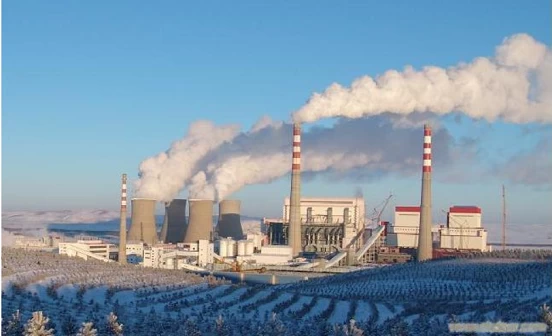Boiler Terminology Explanation (Part 15)
Boiler Terminology Explanation (Part 15)
141. Reheater
As a China C63200 check valve factory, we understand the importance of high-efficiency boiler components such as the reheater, which is a heating surface in the boiler that reheats the exhaust steam from the high-pressure cylinder of the turbine to a certain temperature. With the increase in steam pressure, reheating is adopted to reduce the moisture content of the steam at the turbine's exhaust end and to further improve the unit’s thermal efficiency. Based on heat transfer characteristics, reheaters can be divided into two types: convective reheaters and radiant reheaters.
Convective reheaters are arranged in the convective flue gas path and mainly rely on convective heat transfer. Their structure is similar to convective superheaters and consists of many serpentine tubes connected in parallel. They are generally located in areas with relatively lower flue gas temperatures and use tubes with larger diameters. The reasons are:
① Medium-pressure steam has a lower heat transfer coefficient, and the resistance in the reheating system significantly affects the turbine’s heat consumption. The steam velocity is limited, which lowers the cooling capacity of the steam on the tube wall and can easily cause tube overheating.
② Reheat steam has low pressure and specific heat, making it more sensitive to temperature deviations.
③ To ensure the economic performance of the thermal system, the total system resistance is usually limited to no more than 0.2–0.3 MPa.
Radiant reheaters are arranged on the front or side walls of the boiler and mainly absorb radiant heat from the furnace. Together with the convective reheater, they form a radiant–convective reheating system, which helps improve steam temperature regulation characteristics.
142. Spray Type Desuperheater
A spray type desuperheater is a device that directly sprays water into superheated steam for temperature reduction. Because the sprayed water directly mixes with the steam, it requires high-quality water. For boilers with good feedwater quality, feedwater can be directly used as desuperheating water. The desuperheating water for reheat steam is extracted from the intermediate stage of the feedwater pump. The desuperheater must have good atomization performance, be easy to control and adjust, have a simple structure, and operate reliably. To avoid thermal stress and fatigue damage caused by water droplets contacting the tube wall, a protective sleeve is installed inside the desuperheater, and its length should exceed the evaporation distance of the water droplets.
143. Combustion System
The combustion system consists of the equipment and associated piping for supplying sufficient fuel and air to the boiler furnace and for removing the combustion flue gases. It should be properly selected based on fuel type, boiler type, and combustion method, with appropriate specifications and quantities, allowing for operational flexibility and economic performance. Generally, it includes three parts: fuel preparation, air system, and flue gas purification/discharge system.
144. Pulverized Coal Preparation System
To improve boiler efficiency and performance, the pulverized coal preparation system grinds raw coal into fine powder and delivers it to the boiler furnace for suspension combustion. This system includes the grinding equipment and connecting pipelines.
145. Coal Bunker
A coal bunker is a container in the boiler house for storing raw coal. To ensure uninterrupted operation at the boiler’s maximum continuous evaporation capacity, coal bunkers of sufficient size are necessary. The required storage capacity depends on coal quality and the coal feeding system. Typically, it is designed to hold 8–12 hours’ worth of coal consumption.
146. Coal Feeder
A coal feeder is mechanical equipment that accurately regulates the amount of coal fed into the pulverizer according to load requirements. It is installed between the coal bunker and the pulverizer. In direct-firing systems, the coal feed rate is directly linked to boiler load. Coal feeders come in various types, mainly volumetric and gravimetric.
147. Coal Pulverizer
A coal pulverizer grinds crushed raw coal into fine powder (with a fineness R90 = 5%–60%) for boiler combustion. The grinding process involves overcoming intermolecular forces, increasing surface area, and consuming energy—usually measured in kWh per ton. Grinding mechanisms include crushing, impacting, and attrition, with crushing being the most energy-efficient. Modern pulverizers also include drying capabilities, using hot air during grinding to dry the coal and transport the powder. This enables stable, continuous feeding, drying, grinding, and delivery of qualified pulverized coal to the combustion system.
148. Classifier
A classifier separates coarse powder from the air-coal mixture discharged by the pulverizer and returns it for further grinding. It works based on gravity, inertia, and centrifugal force. The mixture enters the classifier vertically, where expanded flow area slows the speed, causing coarse particles to drop. Inertia and centrifugal forces further aid separation. The fineness can be adjusted by changing blade angles.
149. Rotary Air Preheater
A rotary air preheater is a regenerative heat exchanger in which flue gas and air alternately pass through a heat storage element, typically made of closely spaced metal sheets. Compared to tubular air heaters, it is smaller, lighter, more compact, and easier to maintain. The cold section is replaceable, and corrosion issues are easier to manage.
150. Air Heater
An air heater increases the inlet air temperature of the air preheater to prevent low-temperature corrosion, which commonly occurs at the boiler tail end with high-sulfur fuels. Sulfur in flue gas can form corrosive compounds when flue temperature drops. Therefore, steam-heated air heaters are installed upstream of the preheater to raise air temperature, ensuring the average temperature across the preheater exceeds the flue gas dew point and reducing corrosion risk on the cold end of the heat exchanger.

 +86 512 68781993
+86 512 68781993 


















